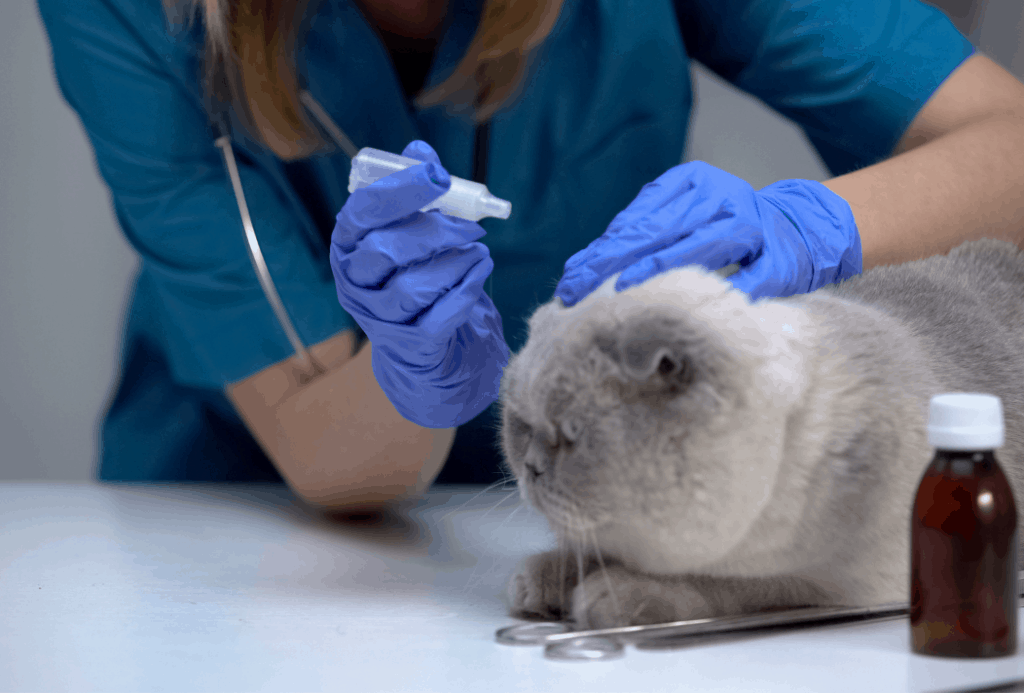Why Shouldn’t Antibiotics Always be Prescribed for our Pets?
Even the healthiest pet can develop an infection over time. It can be something mild like a urinary tract infection, an ear infection, or a skin infection. Some infections can be more severe like uterine infections or kidney and liver infections, affecting multiple organs all at once.
There are often situations where your veterinarian will prescribe a broad-spectrum antibiotic to help fight an infection.
Like all other medical professionals, veterinarians are working to ensure that antibiotics are prescribed more carefully. If they are prescribed in situations where they are not necessary, many problems can result. In this article we discuss some of these situations, and a few of the reasons why antibiotics should be prescribed cautiously.
What are antibiotics?
Antibiotics are medications that help to fight bacterial infections.
Some antibiotics work to inhibit bacterial growth (bacteriostatic) while others will kill bacteria (bactericidal). Antibiotics can be prescribed in short courses or sometimes for several weeks, depending on the severity of the infection.
Topical or systemic
Antibiotics can be applied topically to skin or inside of the ears. They can also be given orally in tablet, capsule, or liquid formulations. In a hospital setting, antibiotics can be given intravenously, subcutaneously, or intramuscularly. Antibiotics that aren’t given topically are referred to as systemic antibiotics because they work from within the body.
Antibiotic drug classes
There are numerous antibiotic drug classes, and each class will target different bacteria based on criteria like cell wall thickness (Gram positive versus Gram negative) and whether the bacteria can grow with or without oxygen present (aerobic versus anaerobic bacteria). Broad-spectrum antibiotics can cover multiple bacterial classifications, but there is no single antibiotic that can treat all bacteria.
When are antibiotics recommended for pets?
Your veterinarian will prescribe antibiotics in situations where a bacterial infection is suspected.
Dogs with ear and skin problems are usually checked for infections by performing cytology testing in the clinic setting. This is a microscopic evaluation of cells and bacteria that are collected from the ears and skin. Most bacteria naturally exists in these areas, but when problems like allergies arise, inflammation leads to a breakdown of the skin barrier and surface bacteria makes its way inside the skin, causing infection.


Upper respiratory infections, urinary tract infections, kidney infections, and certain gastrointestinal infections are also situations where your vet may prescribe an antibiotic or two. For pets with severe infections like sepsis or infections affecting bone and other internal organs like the liver, longer courses of antibiotic usage may be necessary.
Why should vets prescribe antibiotics cautiously?
Not every situation calls for antibiotic usage. Medical professionals in all fields, not just veterinary medicine, are being asked to follow the guidelines of antibiotic stewardship. This is an effort to improve how antibiotics are being prescribed by doctors.
Experts suggest that the recent increase in antibiotic resistance is because of the improper use of antibiotics. For example, if there is an infection present and an antibiotic is prescribed, it is important to use the antibiotic for as long as it takes to treat the infection. If some of the bacteria causing the infection is not completely killed because the antibiotic wasn’t used long enough, the bacteria can adapt and become resistant to the antibiotic in future. When this resistant bacteria replicates, the resulting bacteria will also be resistant to the antibiotic.
An antibiotic is not always the solution
Antibiotics can be contraindicated in certain situations. Some pets may have an allergy to certain antibiotics like penicillin. Also, broad-spectrum antibiotics can kill some of the good bacteria that inhabits the gastrointestinal tract of dogs and cats. This beneficial bacteria has an important role in immune system function and can block harmful bacteria from attaching to the inside of the stomach and intestines. When good bacteria is removed from antibiotic usage, harmful bacteria can attach in its place, and problems like vomiting and diarrhea can occur.
Courses of antibiotics are getting shorter
Like most medical professionals, veterinarians are working hard to follow the principles of antibiotic stewardship. They are being encouraged to use more appropriate courses of antibiotics. For example, some of the antibiotics prescribed for urinary tract infections are now being used in shorter courses like three to five days. If you’ve ever been prescribed an antibiotic from your own doctor, you may have noticed that the course only covers about three to five days.
Antibiotics have been incorrectly prescribed in the past
There are some instances where antibiotic usage is controversial. Pancreatitis, for example, is a common problem for dogs who eat things they shouldn’t, especially diets that are high in fat. Pancreatitis is literally inflammation of the pancreas, which causes the inappropriate release of digestive enzymes. This can cause vomiting, diarrhea, and a painful abdomen. Researchers agree that most cases of pancreatitis do not need antibiotics, but only a decade ago, it was common for veterinarians to prescribe an antibiotic prophylactically!

Testing can improve our use of antibiotics
If an infection is suspected, confirmatory testing is key so that the right if any antibiotic is prescribed. As mentioned above with skin and ears, it is easy to confirm the presence of a bacterial infection with in-house testing.
For infections of the respiratory tract or urinary tract, your veterinarian may recommend culture testing. This is when a tissue sample or fluid sample from the site in question is submitted to a laboratory. The bacteria in the sample can be isolated and tested against lots of antibiotics to see which one will treat it best.
The post Why Shouldn’t Antibiotics Always be Prescribed for our Pets? appeared first on VetBabble.




Post a Comment